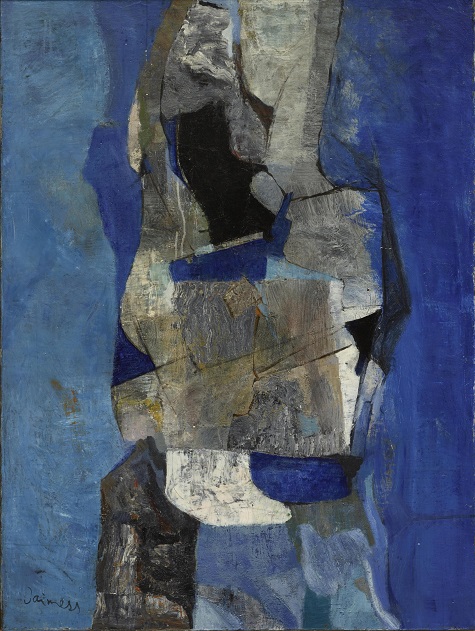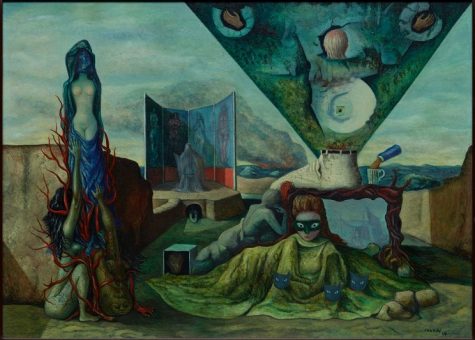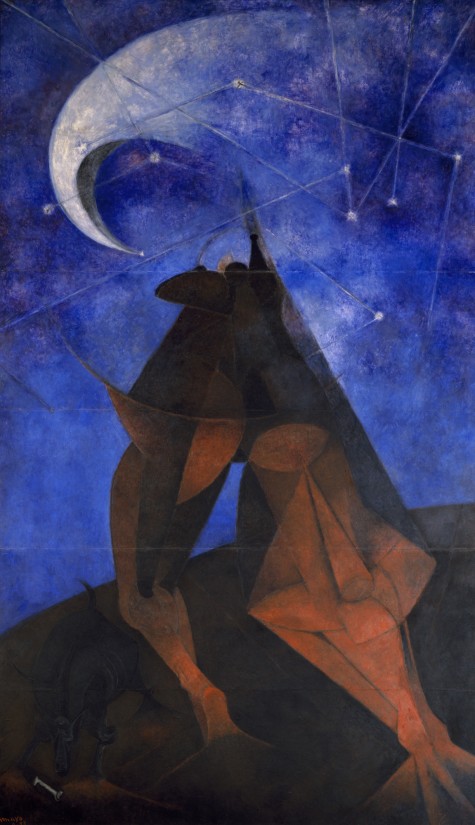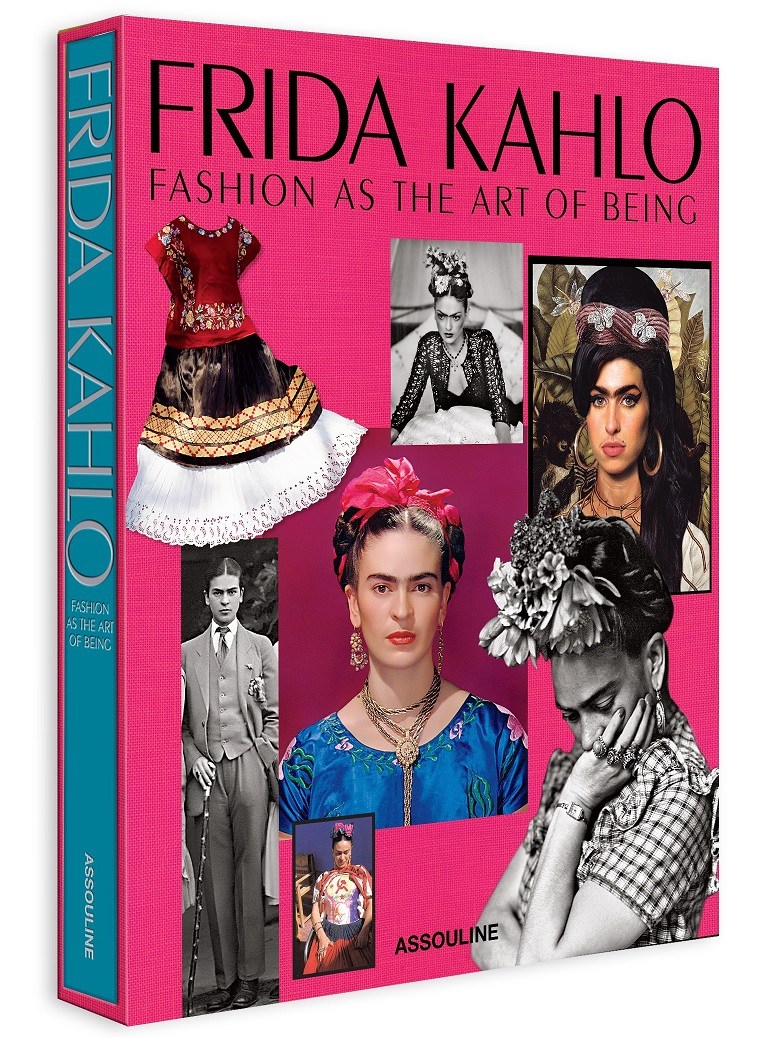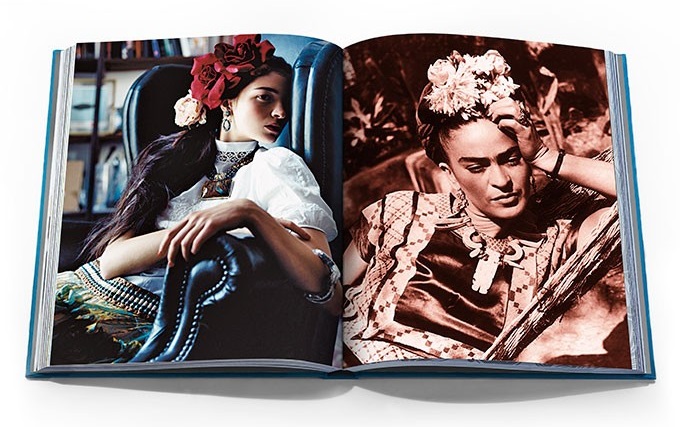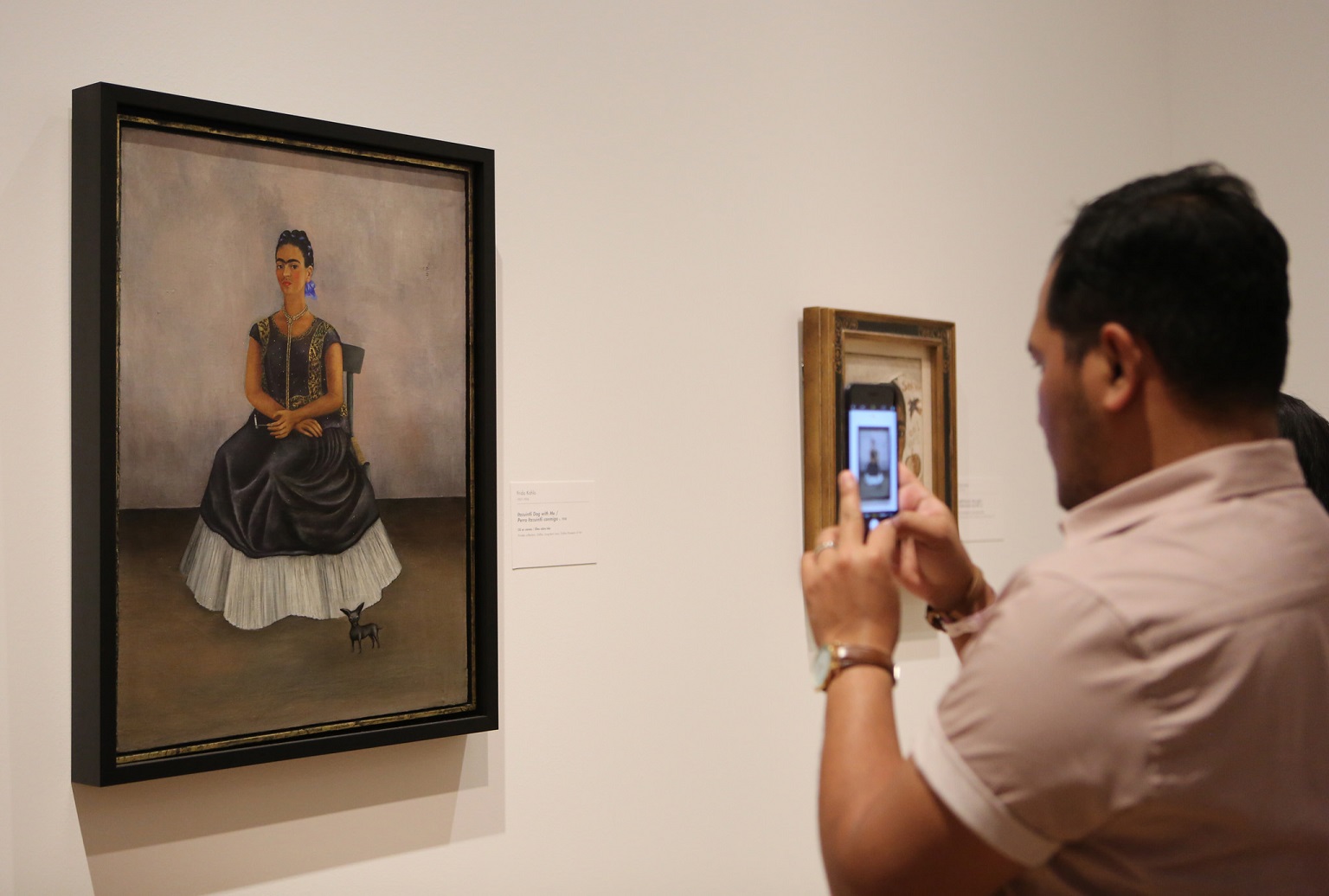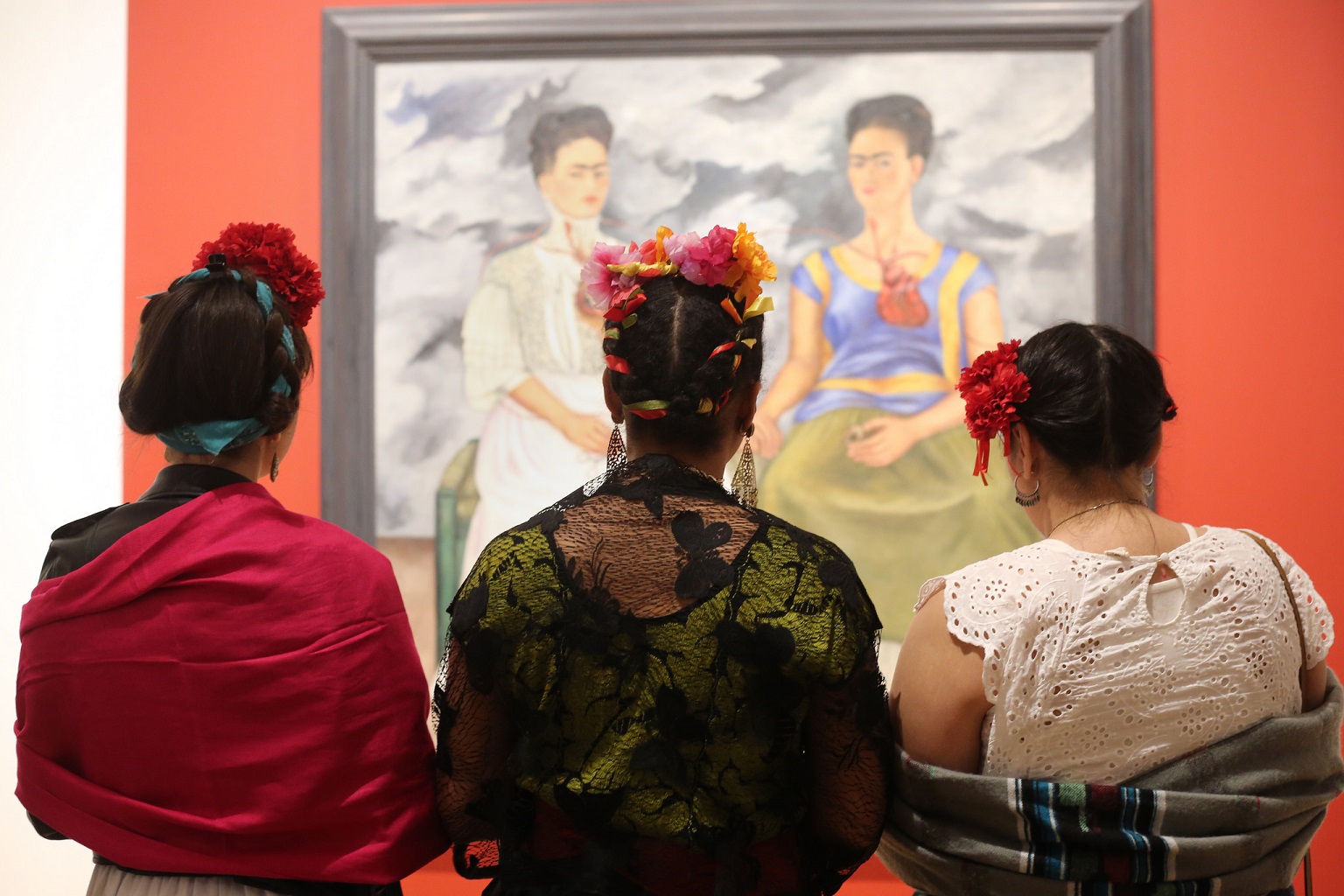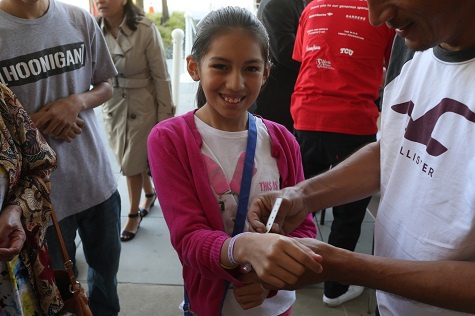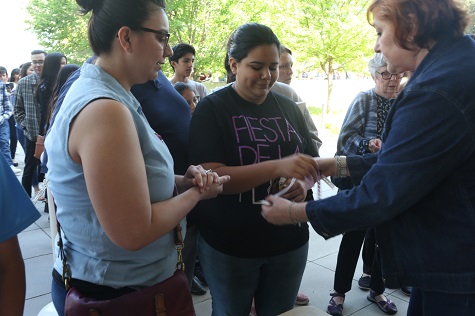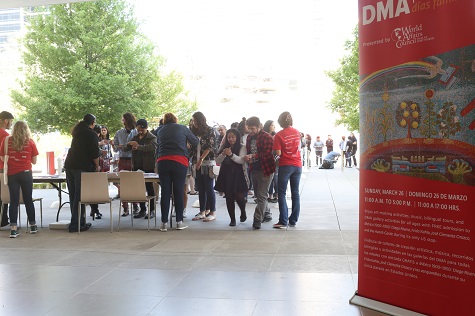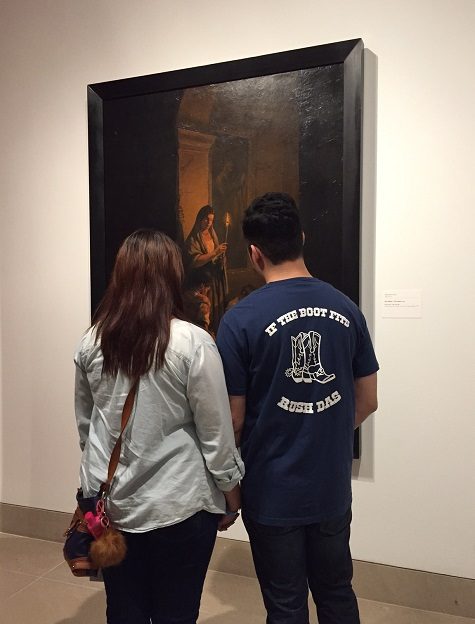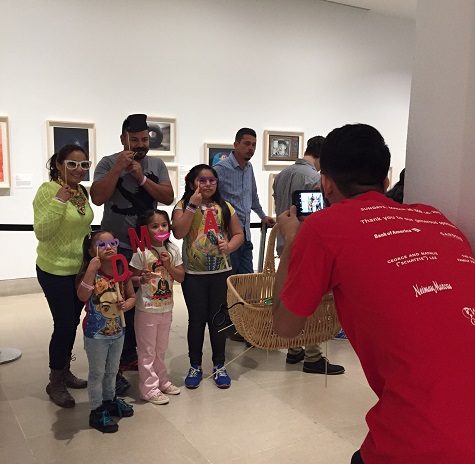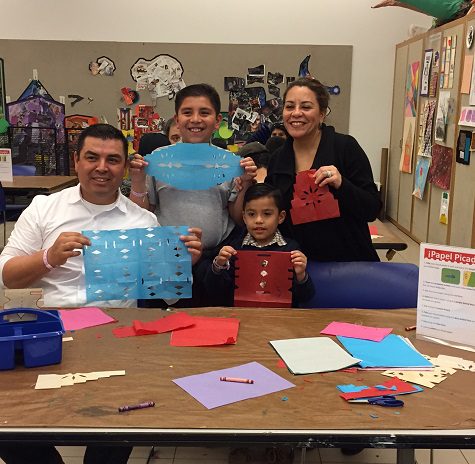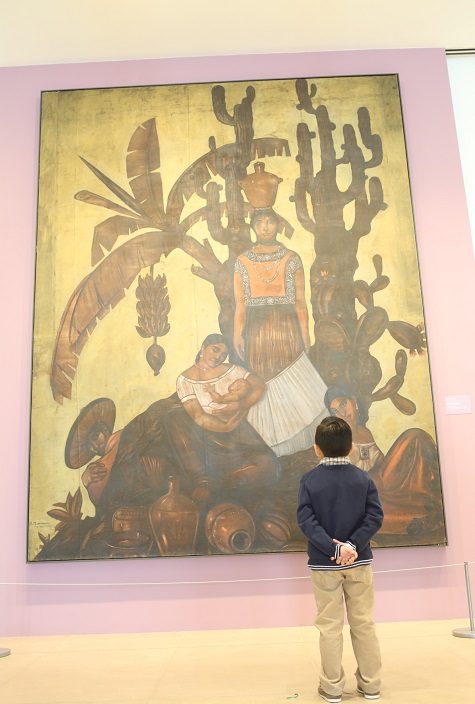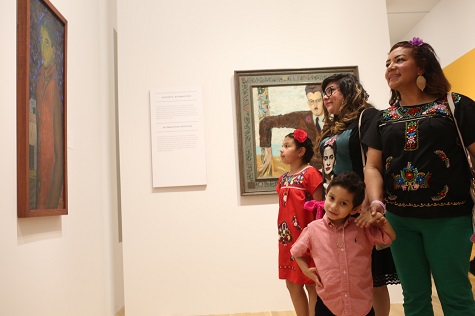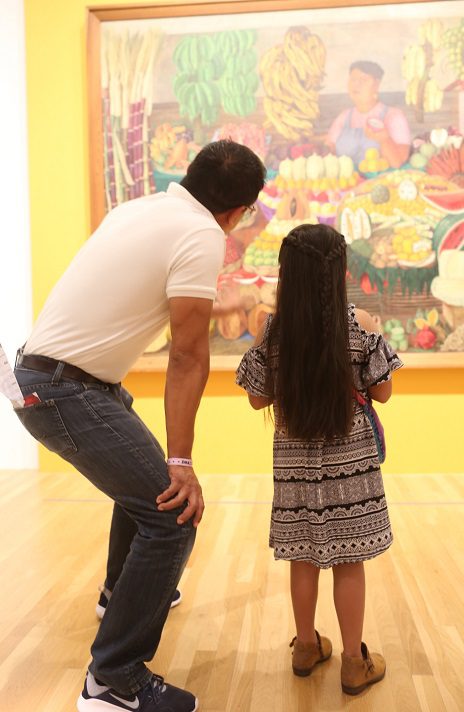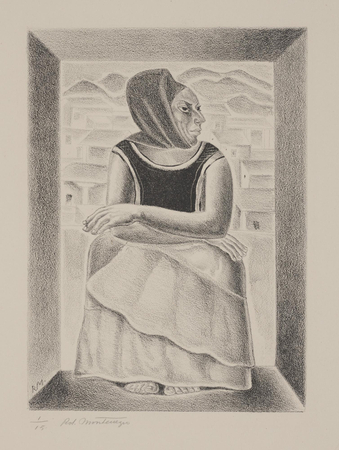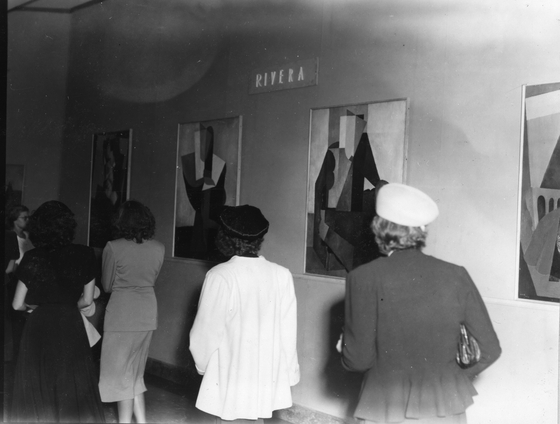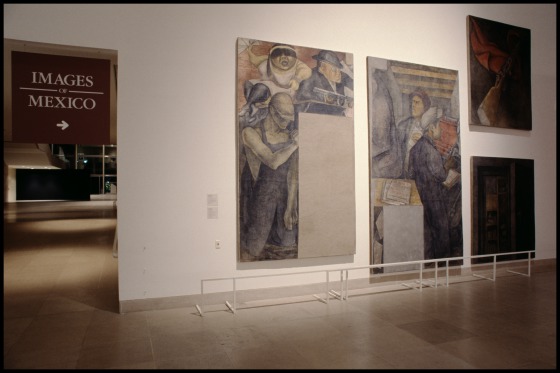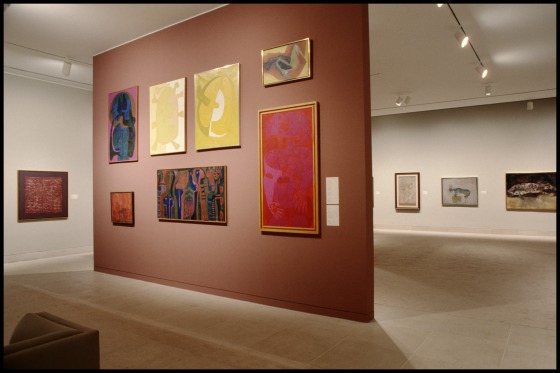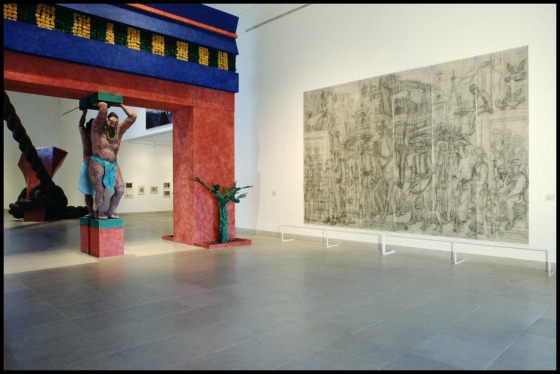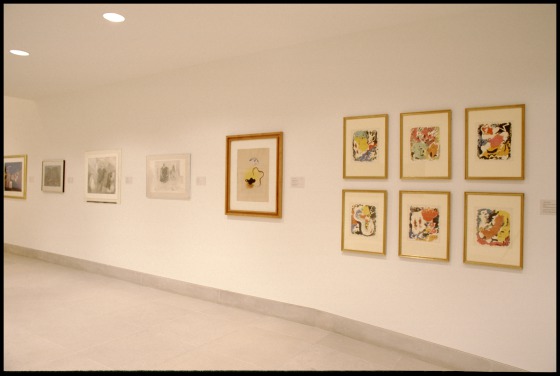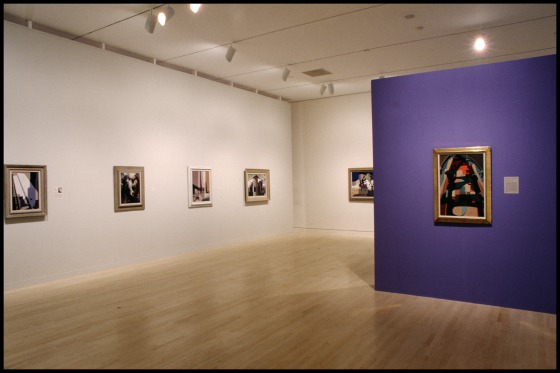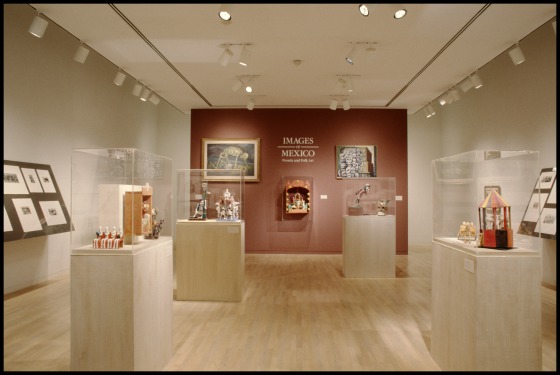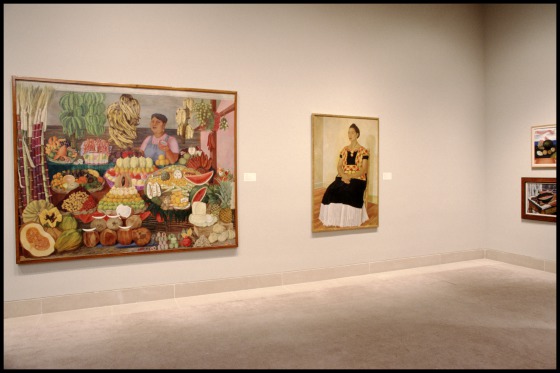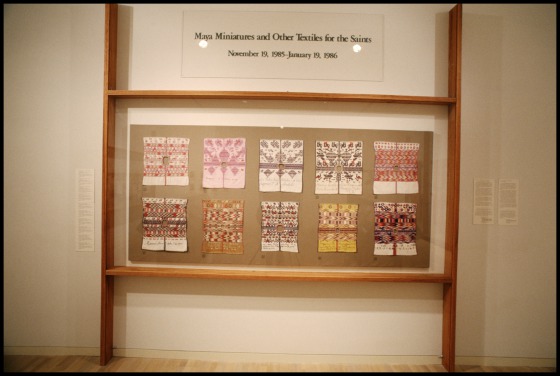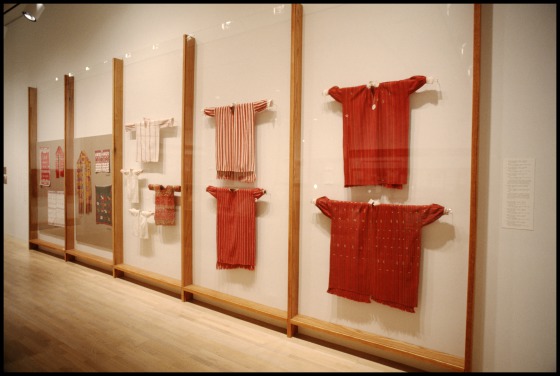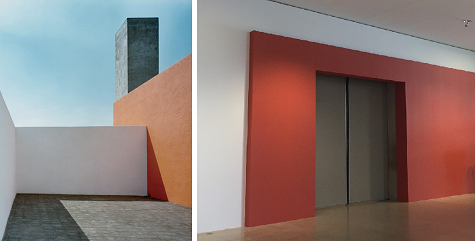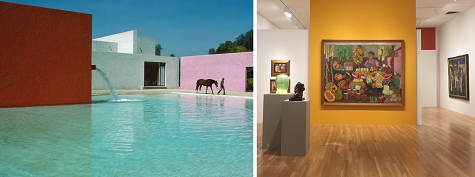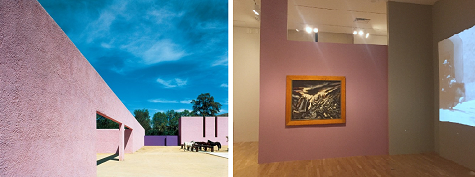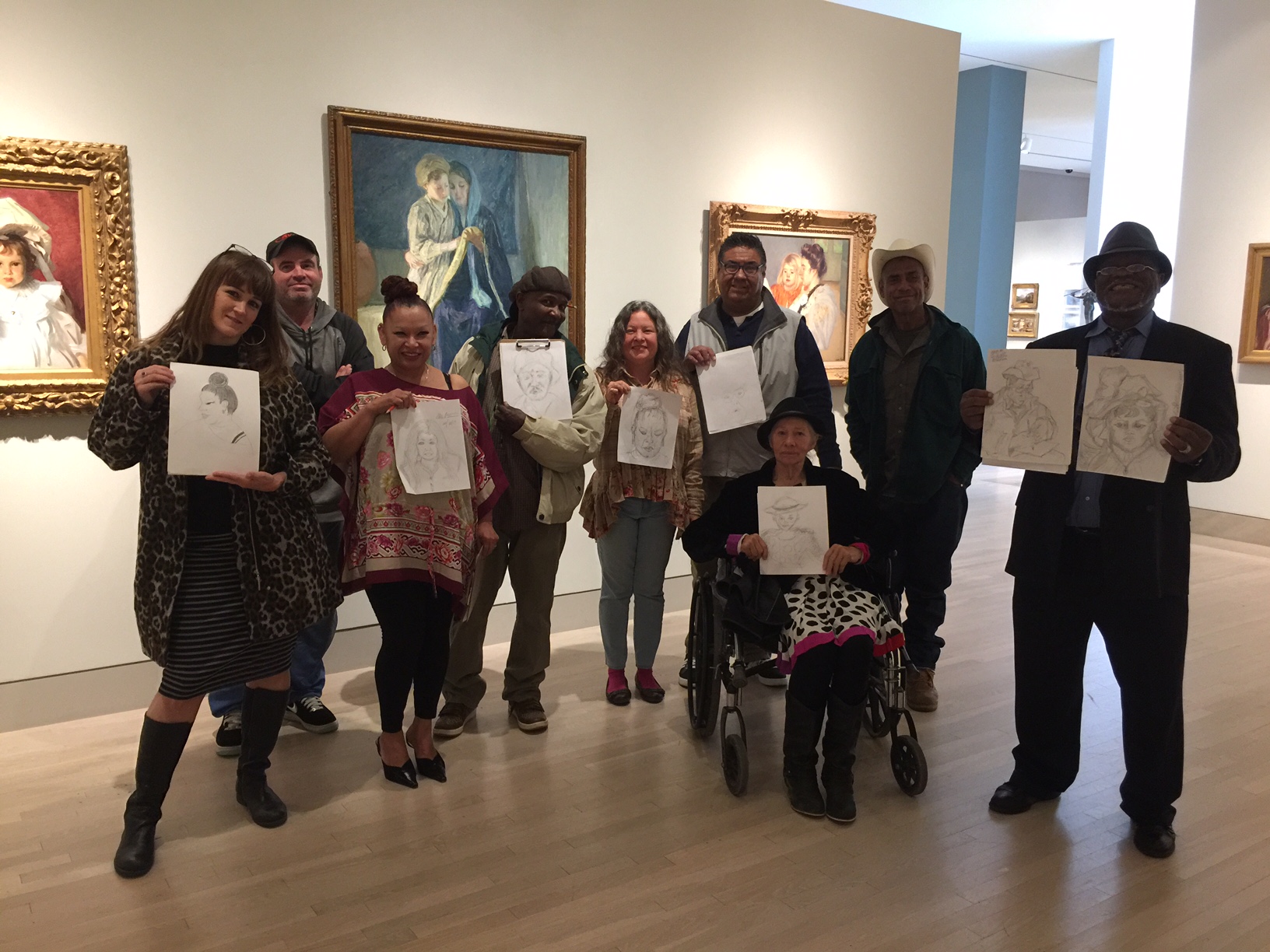
“Now this is the good stuff,” notes Leon Pollard, an artist from the Stewpot Art Program, as he settles in front of Jean Baptiste Marie Pierre’s The Abduction of Europa. We’re exploring flowers in the DMA’s collection, and Leon, who was recently commissioned to paint a mural for his church, immediately points out how Pierre skillfully guides the viewer’s eye across the expanse of the oversized 18th-century canvas. He breaks into a characteristic grin and says, “I really look forward to coming every month. It’s always an education—an inspiration.”
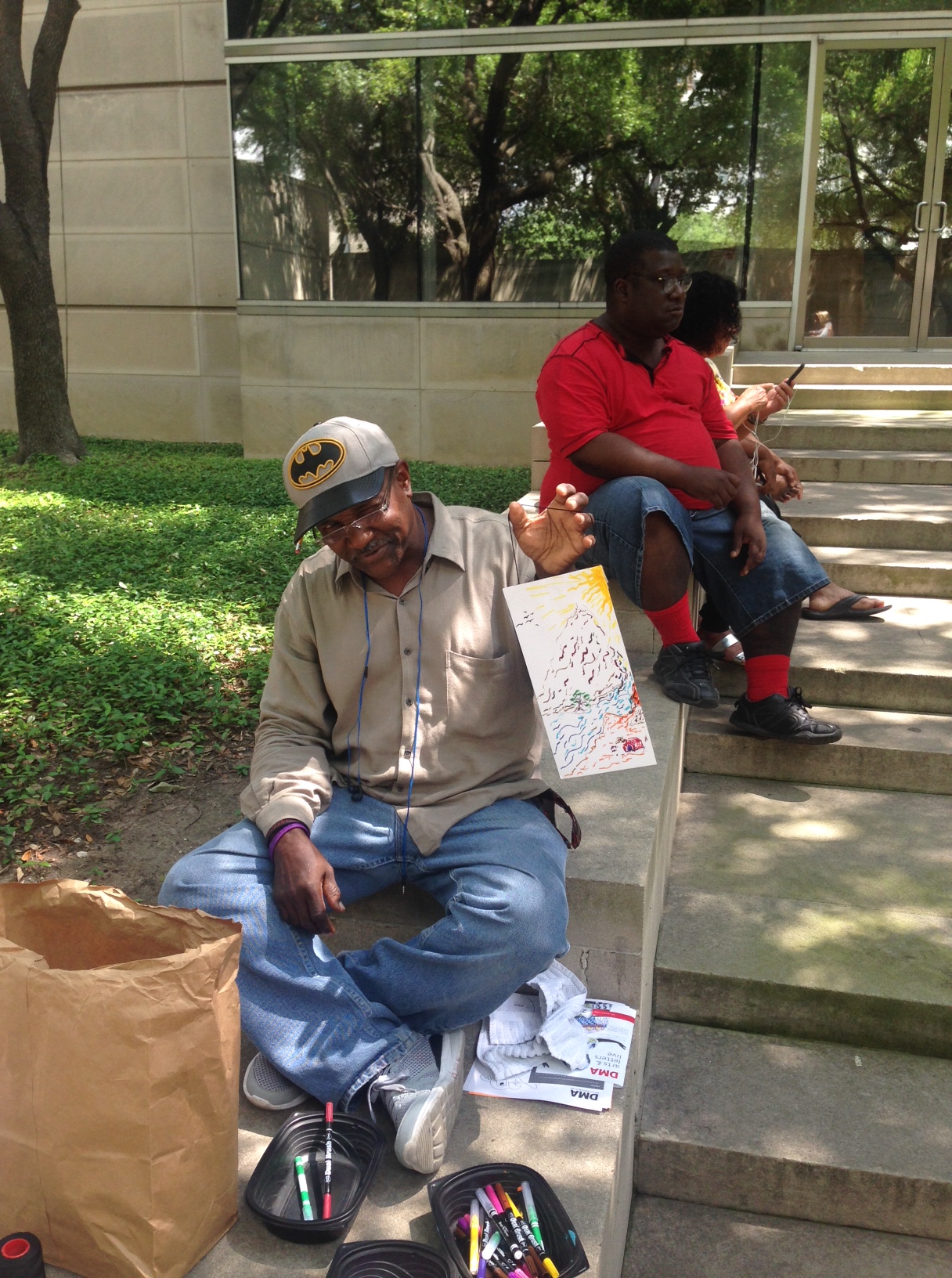
Leon sharing his work in the Sculpture Garden
This summer we marked the one-year anniversary of our monthly gallery teaching program in partnership with The Stewpot, a community outreach program that serves homeless and at-risk populations here in Dallas. Beyond addressing basic survival needs, The Stewpot offers enrichment opportunities for healing, financial support, and personal growth. The Stewpot Art Program offers class time and art supplies to individuals looking to express themselves creatively, grow as artists, and support themselves through the sale of their work. Thanks to Tanya Krueger, one of our DMA docents who also volunteers for The Stewpot, we were able to connect and coordinate a monthly visit for Stewpot artists here at the DMA. Visit by visit, we’ve gotten to know each other and the artists have grown more comfortable in the Museum. A favorite memory of mine is when one of the artists, Donald of Dallas, dropped by to visit during a rainy day, knowing he was welcome at the DMA.
Working with the Stewpot Art Program has been an eye-opening introduction to the realities of homelessness in our community. Our diverse group includes former teachers, first responders, and veterans. Importantly, there is no single narrative of homelessness, and we should never assume that homelessness reflects the consequence of an individual’s poor decisions. Over the past year, I’ve gained a deeper appreciation for the importance of building relationships and inviting our community into the Museum. This point was driven home when Leon observed, “I used to sleep in the Arts District because it’s peaceful and you can sometimes hear music. I never knew this was here! Now I learn something new every visit by looking at the art.”
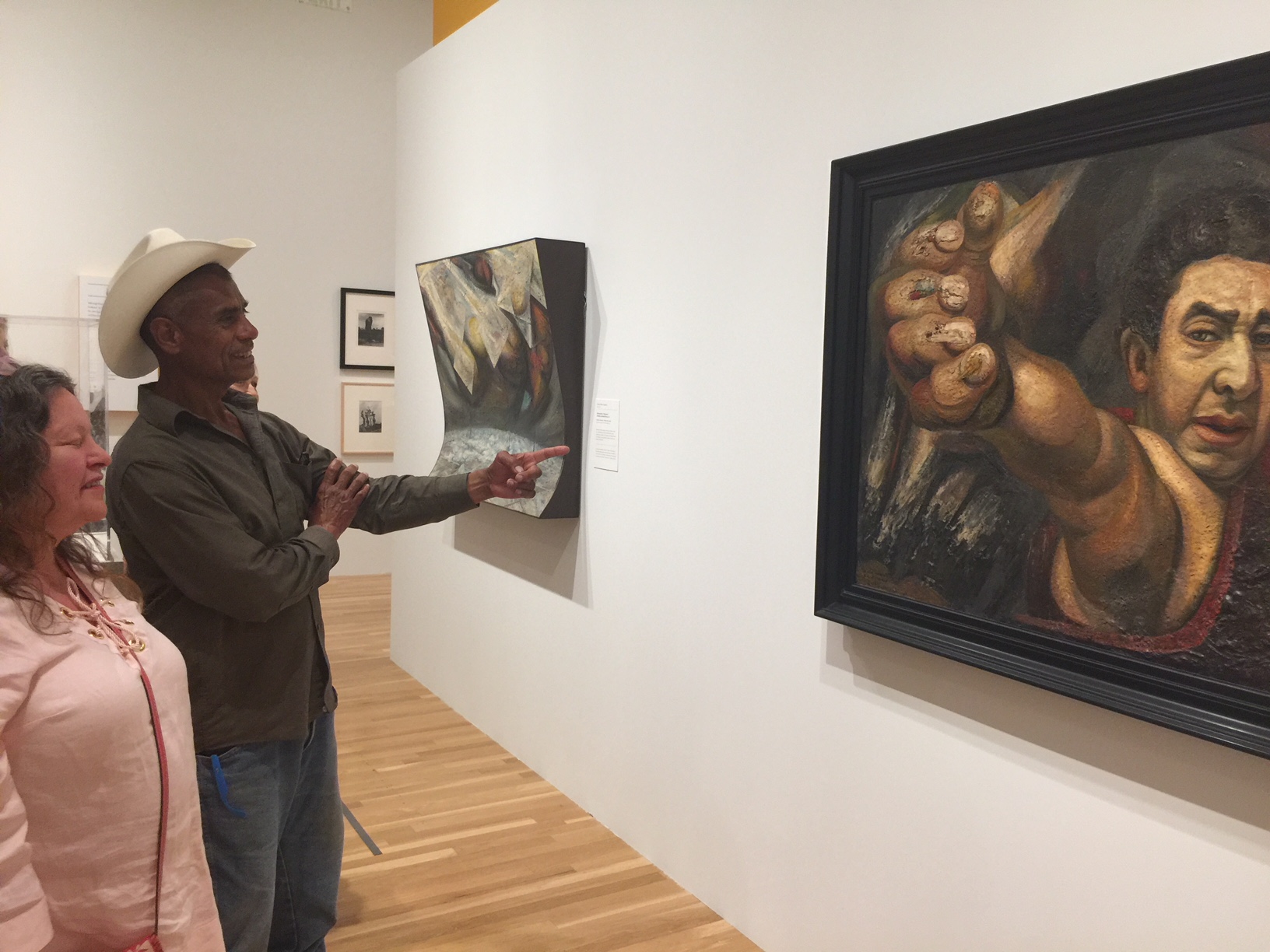
Luis with David Alfaro Siqueiros’s Self-Portrait (The Great Colonel) in the México 1900–1950 exhibition earlier this year
Words cannot express how grateful and thankful I am to work with this group and get to know the artists. Together, we’ve seen art come alive through our participants’ experience and interpretations. We’ve shared moments of joy and gratitude—such as when one of the artists, Luis, broke into applause in front of David Alfaro Siqueiros’s Self-Portrait (The Great Colonel), which was on view in the special exhibition México 1900–1950: Diego Rivera, Frida Kahlo, José Clemente Orozco, and the Avant-Garde—and we’ve encouraged each other to take risks and try new styles and subject matter when we sketch in the galleries. We’ve celebrated graduations, new jobs, and a participant receiving a new set of dentures. We have even taken solace in the timeless beauty of the Keir Collection following the unexpected loss of a participant. Our experience illustrates that art is for everyone, and that studying art helps us understand the human experience and enriches our lives. Looking back, especially during the Thanksgiving season, on our time together sharing gallery discussions, art making, and an appreciation for art and each other’s company, I am deeply thankful for the opportunity to work with the amazing Stewpot artists.
Lindsay O’Connor is the Manager of Docent and Teacher Programs at the DMA.

